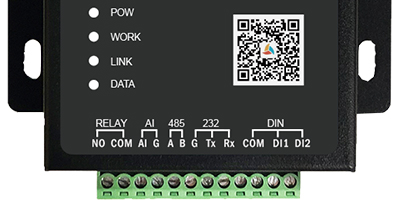At present, there are many types of interfaces in communication equipment, and you will always encounter various conversion boards during debugging. Today, this article will help you understand the differences between these interfaces.
First of all, the serial port, UART port, and COM port refer to the physical interface form (hardware), while RS232/485 and TTL refer to the level standard (electrical signal).
Serial port: Serial port is a general term. UART, TTL, RS232, and RS485 all follow similar communication timing protocols, so they are all commonly called serial ports.
UART interface: Universal Asynchronous Receiver/Transmitter (Universal Asynchronous Receiver/Transmitter). UART is a logic circuit for serial port transmission and reception. This part can be an independent chip or can be embedded into other chips as a module. There are UART modules in microcontrollers, SOCs, and PCs. .
COM port: specifically refers to the D-SUB shape (a connector structure, the connector of the VGA interface is also a D-SUB) serial communication port on a desktop computer or some electronic equipment, which applies serial communication timing and RS232 logic circuits. flat.


TTL, RS232, and RS485 are all expressions of logic levels.
TTL: TTL refers to bipolar transistor logic circuit. Many “USB to TTL” modules on the market are actually “USB to TTL level serial port” modules. This signal 0 corresponds to 0V, 1 corresponds to 3.3V or 5V, and is compatible with the IO level of the microcontroller and SOC. However, the actual level is not necessarily TTL, because most digital logic is now made of CMOS technology, but the term TTL is used. When we perform serial communication, what comes directly from the microcontroller is basically TTL level.
RS232 features
RS232 is one of the current mainstream serial communication interfaces. Since the RS232 interface standard appeared earlier, it inevitably has shortcomings, mainly including the following four points:
- The signal level of the interface is relatively high, which can easily damage the chip of the interface circuit. The voltage of any signal line of the RS232 interface has a negative logic relationship, that is: logic “1” is -3–15V, logic “0”: 3-15V; the noise margin is 2V, which means the receiver is required to be able to identify voltages higher than A signal of 3V is regarded as a logic “0”, a signal below -3V is regarded as a logic “1”, a TTL level of 5V is a logic positive, and 0 is a logic negative. It is not compatible with TTL levels, so a level conversion circuit is required to connect to TTL circuits.
- The transmission rate is low. During asynchronous transmission, the bit rate is 20Kbps; therefore, in the 51CPLD development board, the integrated program baud rate can only be 19200 for this reason.
- The interface uses a signal line and a signal return line to form a common ground transmission form. This type of common ground transmission is prone to common mode interference, so its immunity to noise interference is weak.
- The transmission distance is limited. The standard maximum transmission distance is 50 feet, but in fact it can only be used at about 15 meters.
RS485 features
When the communication distance is required to be from tens of meters to thousands of meters, the RS-485 serial bus standard is widely used. RS-485 uses balanced transmission and differential reception, so it has the ability to suppress common mode interference. The standard maximum transmission distance of the RS-485 interface is 4000 feet (about 1219 meters), which can actually be up to 3000 meters. In addition, the RS-232-C interface only allows one transceiver to be connected to the bus, which is a single station capability. The RS-485 interface allows the connection of up to 128 transceivers on the bus, which means it has multi-station capabilities, so users can easily establish a device network using a single RS-485 interface.
